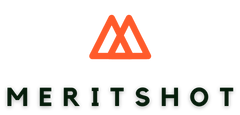Supply chain management is a multifaceted process that involves the coordination and management of a vast network of suppliers, manufacturers, distributors, and retailers. The use of data science techniques has emerged as a powerful tool for optimizing supply chain operations, reducing costs, and improving customer satisfaction. In this blog post, we will explore a range of intriguing data science project ideas specifically tailored for the supply chain domain. By undertaking these innovative projects, organizations can unlock the potential of data science to revolutionize their supply chain practices and achieve operational excellence.

- Demand Forecasting: In addition to historical sales data and seasonality, demand forecasting models can also consider external factors such as economic indicators, market trends, and promotional activities. By incorporating these variables, organizations can gain a deeper understanding of demand drivers and make more accurate predictions. Furthermore, advanced forecasting techniques like time series analysis, machine learning algorithms, and predictive analytics can be employed to capture complex patterns and trends in demand data, enabling organizations to anticipate fluctuations and adjust their supply chain accordingly.
- Route Optimization: To optimize transportation routes, organizations can integrate real-time data sources, such as GPS data, traffic information, and weather conditions. By continuously monitoring these variables, route optimization models can dynamically adjust routes to avoid congestion, accidents, or other unexpected events, ensuring timely delivery. Moreover, route optimization can consider additional constraints, such as vehicle capacities, delivery windows, and fuel efficiency, to further enhance cost-effectiveness and customer satisfaction.
- Inventory Management: In addition to predicting inventory levels, advanced inventory management models can incorporate demand uncertainty, lead time variability, and supplier reliability to minimize stockouts and improve service levels. Techniques like stochastic modeling, safety stock optimization, and service level optimization can be employed to strike a balance between inventory carrying costs and customer satisfaction. By adopting a demand-driven approach, organizations can align their inventory levels with customer demand, resulting in improved responsiveness and reduced inventory holding costs.
- Supplier Selection: Supplier evaluation models can incorporate multiple criteria and assign appropriate weights to each criterion based on the organization’s strategic priorities. Factors such as quality certifications, compliance with regulations, financial stability, social responsibility, and sustainability practices can be considered in the supplier selection process. Data from external sources, such as supplier databases, industry reports, and supplier performance metrics, can be integrated into the models to provide a comprehensive and objective evaluation of potential suppliers.
- Supply Chain Risk Management: In addition to analyzing historical data, organizations can leverage real-time data feeds, such as weather data, news feeds, and social media, to enhance supply chain risk management. By employing sentiment analysis and natural language processing techniques, organizations can monitor social media platforms and news outlets for early indications of potential risks or disruptions. Moreover, simulation and scenario analysis can be used to assess the impact of different risk scenarios on the supply chain and develop effective mitigation strategies.
- Quality Control: Quality control models can leverage real-time sensor data from production processes and equipment to monitor quality indicators in real time. By implementing advanced statistical process control techniques, organizations can detect deviations from quality standards and trigger immediate corrective actions. Additionally, predictive maintenance techniques can be applied to anticipate equipment failures or malfunctions that may impact product quality, allowing proactive maintenance to be performed and reducing the likelihood of defects.
- Product Pricing Optimization: Organizations can utilize machine learning algorithms and price optimization models to analyze large datasets, including customer purchase history, competitor pricing, and market demand. By dynamically adjusting prices based on demand elasticity, product lifecycle, and market conditions, organizations can maximize revenue and profit margins. Moreover, price optimization models can incorporate dynamic pricing strategies, such as surge pricing or personalized pricing, to capture additional value from different customer segments.
- Sustainability Analysis: Sustainability analysis in the supply chain involves quantifying the environmental impact of various activities, such as transportation, manufacturing processes, and packaging. By leveraging life cycle assessment methodologies and carbon footprint analysis, organizations can identify hotspots of environmental impact and prioritize areas for improvement. Data science techniques, including data mining and pattern recognition, can also be used to identify opportunities for waste reduction, energy efficiency, and carbon emissions reduction throughout the supply chain. Warehouse Optimization: In warehouse optimization, organizations can leverage data science techniques such as simulation modeling and optimization algorithms to design and optimize warehouse layouts, bin placements, and material handling processes. By analyzing historical data on product movement, order patterns, and storage requirements, organizations can identify bottlenecks, minimize travel distances, and streamline warehouse operations. Additionally, technologies like RFID (Radio Frequency Identification) and IoT (Internet of Things) sensors can provide real-time data on inventory levels, enabling dynamic storage allocation and efficient order-picking strategies.
- Supply Chain Network Optimization: Supply chain network optimization involves analyzing the entire supply chain network, including the location of manufacturing facilities, distribution centers, and retail stores. Data science techniques such as network modeling, mathematical optimization, and simulation can help organizations determine the optimal number and location of facilities, optimal transportation routes, and the allocation of customer demands to different nodes in the network. By considering factors like transportation costs, lead times, customer demands, and facility capacities, organizations can minimize costs, reduce response times, and enhance overall supply chain performance.
- Delivery Time Prediction: Delivery time prediction models can incorporate various data sources such as historical delivery data, traffic conditions, weather forecasts, and transportation provider performance metrics. By leveraging machine learning algorithms and predictive analytics, organizations can estimate delivery times with greater accuracy, taking into account variables that may impact transit times. This enables retailers to provide customers with reliable delivery estimates, improve customer satisfaction, and optimize customer service operations.
- Sales and Inventory Forecasting: Sales and inventory forecasting models utilize historical sales data, market trends, promotional activities, and other relevant variables to predict future demand and inventory levels. By employing time series analysis, machine learning algorithms, and demand-sensing techniques, organizations can enhance the accuracy of their forecasts. Accurate sales and inventory forecasts enable retailers to optimize inventory levels, minimize stockouts and overstock situations, improve cash flow, and effectively plan promotions and pricing strategies.
- Order Fulfillment Optimization: Order fulfillment optimization involves streamlining the process of fulfilling customer orders from the moment an order is received until it is delivered. Data science techniques such as process optimization, machine learning, and real-time analytics can be applied to improve order-picking strategies, minimize order lead times, and optimize order batching and sequencing. By optimizing order fulfillment processes, organizations can enhance order accuracy, reduce fulfillment costs, and improve customer satisfaction through faster and more efficient order delivery.
- SKU Rationalization: SKU rationalization entails analyzing sales data, profitability metrics, and market demand to identify low-performing SKUs (Stock Keeping Units) that contribute minimal value to the product line. Data science techniques like clustering analysis, profitability analysis, and demand forecasting can assist organizations in identifying SKUs with low sales volume, low profitability, or high carrying costs. By eliminating or phasing out low-performing SKUs, organizations can reduce inventory holding costs, streamline product offerings, and allocate resources more effectively to higher-performing SKUs.
- Supply Chain Transparency: Supply chain transparency involves developing models and systems that provide real-time visibility into supply chain operations, enabling stakeholders to monitor and analyze key performance indicators (KPIs) and make informed decisions. By integrating data from various sources such as IoT sensors, RFID tags, GPS tracking, and enterprise systems, organizations can gain insights into inventory levels, order statuses, transportation activities, and production schedules. Supply chain transparency enhances collaboration, enables proactive issue resolution, and supports continuous improvement efforts to optimize supply chain efficiency, reduce lead times, and improve customer service.
In conclusion, the supply chain domain offers a wealth of opportunities for data science projects. By working on these projects, you can gain valuable experience with data science techniques and tools while contributing to the optimization of supply chain operations, reducing costs, and improving customer satisfaction.





